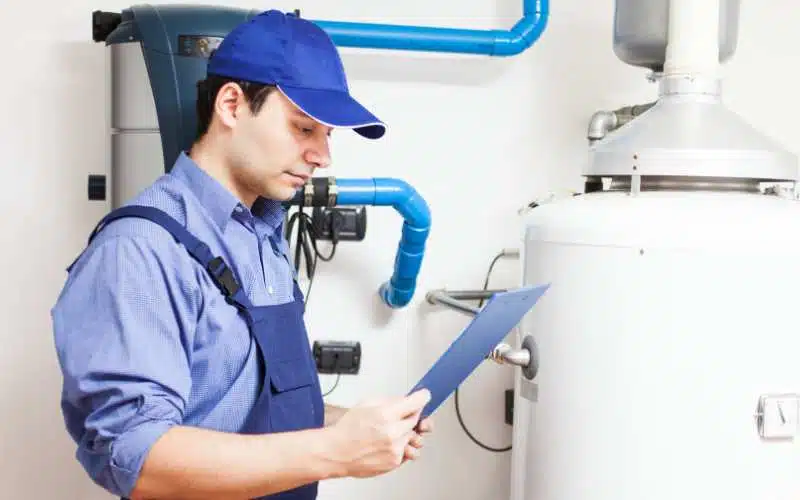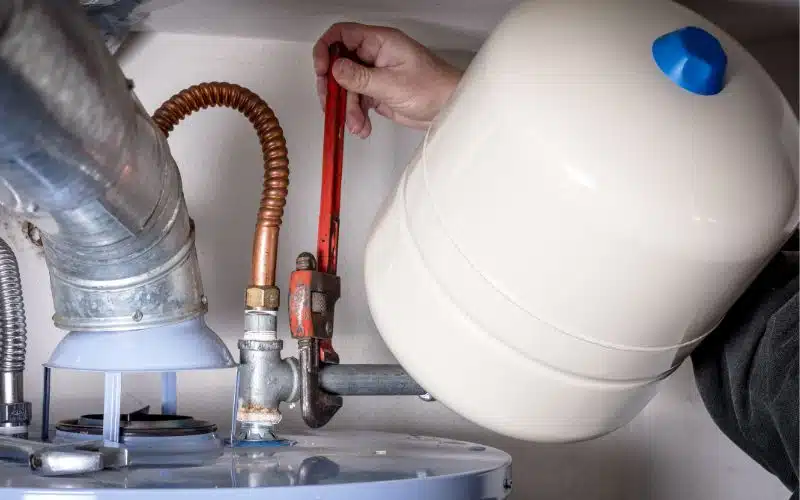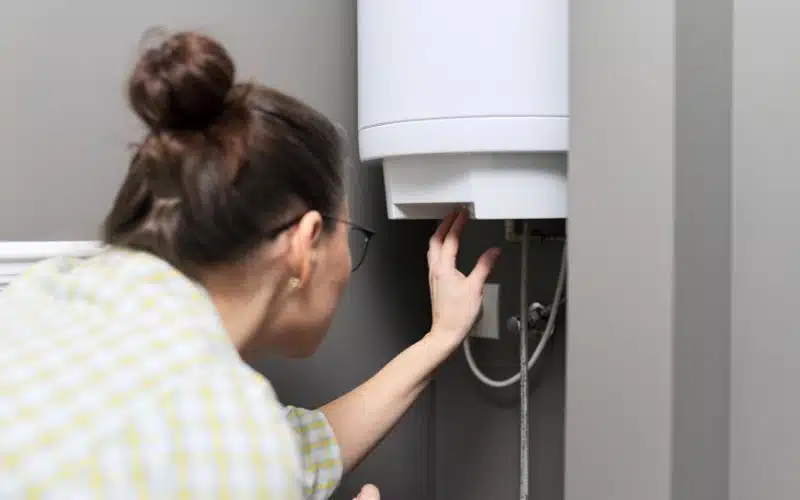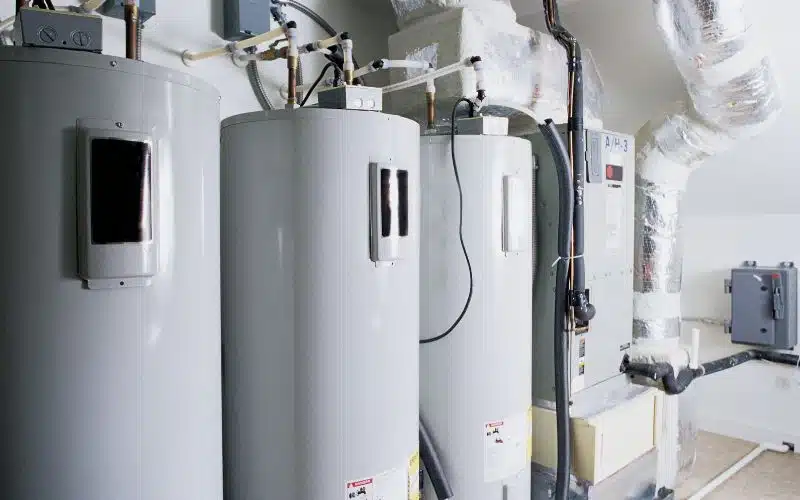A water heater is an essential appliance to have in every home. For your residence to have access to a quantifiable amount of hot water, it is essential to have such a large and weighty piece of equipment that can help.
Furthermore, when transporting a water heater, the standard simple tip is to position it so that it stands upright or on the side the whole time.
However, there are circumstances where this would not be practicable for specific individuals.
For example, there is a possibility that the performance of your water heater may change depending on how you transfer it.
Users can transport a water heater on its side if they can handle it cautiously. However, if you do not feel confident in your ability to move a water heater correctly, you should look into hiring a professional to assist you with this task.
Can You Transport an Electric Water Heater On Its Side?
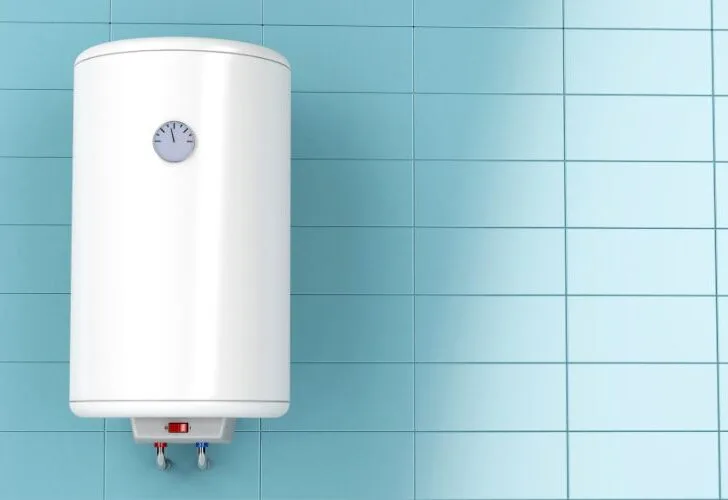
It is possible to transport electric water heaters on their sides. However, you must ensure the water heater is placed down completely flat and has enough cushioning to protect the glass lining and the metal shell from breaking.
It would help if you also secured the electric water heater with straps to avoid damage.
Inside the delicate metal case of a water heater is a glass lining that can easily break. This makes side-lying somewhat unsafe.
Unfortunately, there are times when it is impossible to transfer a water heater in a vertical orientation.
It’s a misconception that you must carry heaters upright; most plumbers carry them on their sides.
However, it would be best if you drove with extreme caution since water heaters are susceptible to being broken in various ways.
It is common practice for salespeople to advise prospective customers that users must deliver the water heater upright.
They say this since there is no way it could fit in your vehicle; you would be obligated to pay for the item to be delivered.
Water heaters are packaged in a box, making it very simple to move them while they are on their side. This is the case with hybrid models as well as other varieties of water heaters.
Even though the appliance often arrives standing up, many plumbers believe it is safer for the shipment to appear on its side.
This is because the appliance is less likely to fall over. There’s less harm to the box if it falls over this way. When upright, there is much more room for it to fall.
Can You Transport a New Water Heater On its Side?
Yes, you can even transport a brand new water heater on its side. Although you risk experiencing various difficulties whenever you transport an appliance, regardless of the orientation in which you place it.
During a transfer, things might become scuffed, damaged, shattered, and lose their respective components.
If the container rolls or hits against other objects while moving, they might damage the interior liner. If the liner sustains damage, the water heater will be rendered useless.
However, this does not exclude the possibility of turning the water heater on its side while moving it.
Transporting your water heater on its side won’t dramatically enhance your risk of experiencing a problem, even if you do it intentionally.
Even if you carry it standing up, there is still a chance it may be damaged; the likelihood of this happening increases.
The majority of water heaters have a height of around five feet. The entire thing can fall over if it is not securely secured, which might happen if you hit a bump.
Can You Transport a Hybrid Water Heater On Its Side?
Transporting a hybrid water heater necessitates that it be maintained upright at all times.
Therefore, keeping the fragile glass liner upright is the most effective way to protect it from damage.
It is possible for a single person to transport a hybrid water heater if they follow appropriate safety measures.
However, if you want to handle it on your own, you will need a plan to ensure you get home from the store without mishap.
The size of your car is something else that you must consider. A compact vehicle with four doors will not be sufficient in size.
However, if you have a vehicle in the middle of the size spectrum, you should be able to transfer the unit without incident as long as it fits.
For instance, a water heater that is 30 gallons in capacity should fit a vehicle in the middle to the extensive size range.
Even if you have no choice but to put it horizontally on its side, you should be careful to avoid placing it on the controls in any circumstance.
The water heater may come with instructions on how to do this securely. Because each component is unique, carefully follow the instructions.
When moving in and out of the vehicle, where most damage happens, handle anything you are transporting with extreme care, regardless of the mode of transportation you choose.
Don’t knock the heater against any surface or drop it on any of them. When carrying out this task, it is best to go about it slowly and with extreme caution.
Can You Transport a New Gas Water On Its Side?
You can put new gas water on its side, but if it’s one of the newer models that arrives pre-filled with water, you won’t be able to do so.
You’re probably familiar with the modern antifreeze formulation, which, for your convenience, contains a volume of water equal to fifty percent of its total volume.
In most cases, the orientation recommended for shipping and stacking is the one in which this side is facing up. However, the side is the best option if you want a comfortable ride in a truck.
For the most part, users believe that transporting a water gas on its side is loaded with an excessive level of danger.
However, this only applies to cold storage appliances like refrigerators and freezers since it will cause the liquid Freon to condense within the cooling loop rather than stay fixed at the bottom of the appliance.
Moving these items while lying down is possible; however, doing so is not encouraged. Doing this means the items must be allowed to stand straight for twenty-four to forty-eight hours before being plugged in.
Can You Transport a Heat Pump Water Heater On Its Side?
Yes, you can also transport a heat pump water heater on its side. You can as well transport it vertically if you desire.
It all depends on the size of your vehicle, and you follow the necessary precautions by ensuring the heat pump water is fully strapped to avoid accidents.
If you are transporting your heat pump or water heater through a big or small vehicle, you must strictly adhere to the necessary measures during transportation.
You can follow this guide below.
#1. Check the Box Dimensions
Take accurate measurements of the available space inside the car to ensure that your new water heater can fit in without any problems.
During the transfer, if you relocate the water heater while it is still in the factory box, it will help ensure the safety of all essential components.
Now is the moment to decide whether you will have it delivered to your house or if you will move it there yourself.
#2. Transfer It To The Vehicle
Move the hot or electric water heater to the vehicle utilizing a hand truck and any other people who can provide help.
#3. Maintain the Stability Of the Load
It is necessary to take precautions during transportation to ensure that the water heater does not shift.
For example, if you move the water heater in an SUV, you will want to ensure it is flat. When folded, the seats of many SUVs do not rest flat.
Check to ensure the water heater is stabilized and flat by utilizing moving sheets or boards to support the tank as a means of shoring it up.
You should also secure the car, so it does not move about while driving it, regardless of the vehicle you use. This is just another incentive for retaining the original packaging it came in.
#4. Follow the Correct Route Home
Choose the path back to the house with the minor potholes. This helps ensure that the tank and its components do not get agitated.
#5. Take Out the Water Heater
As soon as you arrive at your intended location, get the hand truck ready and then transport the water heater from the car in the same manner, you loaded it in.
Make sure that you have someone else available to help you with this. The weight of a water heater might vary.
#6. Examine Areas For Harm
Before moving too far away from the car, it is essential to check the water heater and search for any evident damage.
While carrying a big load, this may save you from making an additional journey into and out of the home.
#7. Adjust It So That It Fits
Once you have brought the tankless water heater inside, you will need to move it into the place required for the installation by the instructions provided by the manufacturer and the plumbing code in your area.
Do Water Heaters Need to Be Transported Upright?
You can transport a water heater, but it isn’t a must. There is a lot of misinformation about straining anode rods or dip tubes, breaking glass lining, or some other hypothetical hazard that may occur while moving water heaters lying down.
Most misleading information is carried around by salespeople attempting to persuade customers to buy water heaters. In no way does the fact that it is prevalent constitute it as proper.
The salespeople insist that they must deliver the water heater in an upright position since they are well aware that a huge water heater will not be able to stand up in most automobiles.
Water Heater Sizes
| Tank Size | Tank Width | Tank Height |
|---|---|---|
| 30 Gal. tall | 21 | 49- ½ |
| 30 Gal. short | 21- ¾ | 30 |
| 50 Gal. tall | 22- ¼ | 60- ⅞ |
| 50 Gal. short | 28- ¼ | 34 |
Conclusion
You can use this information to decide between transporting your water heater. However, hiring a professional is highly recommended if you work on this alone.
If you do this alone, you risk causing irreparable damage or possibly harming yourself. Instead, use caution, follow the correct procedures, and take your time.
